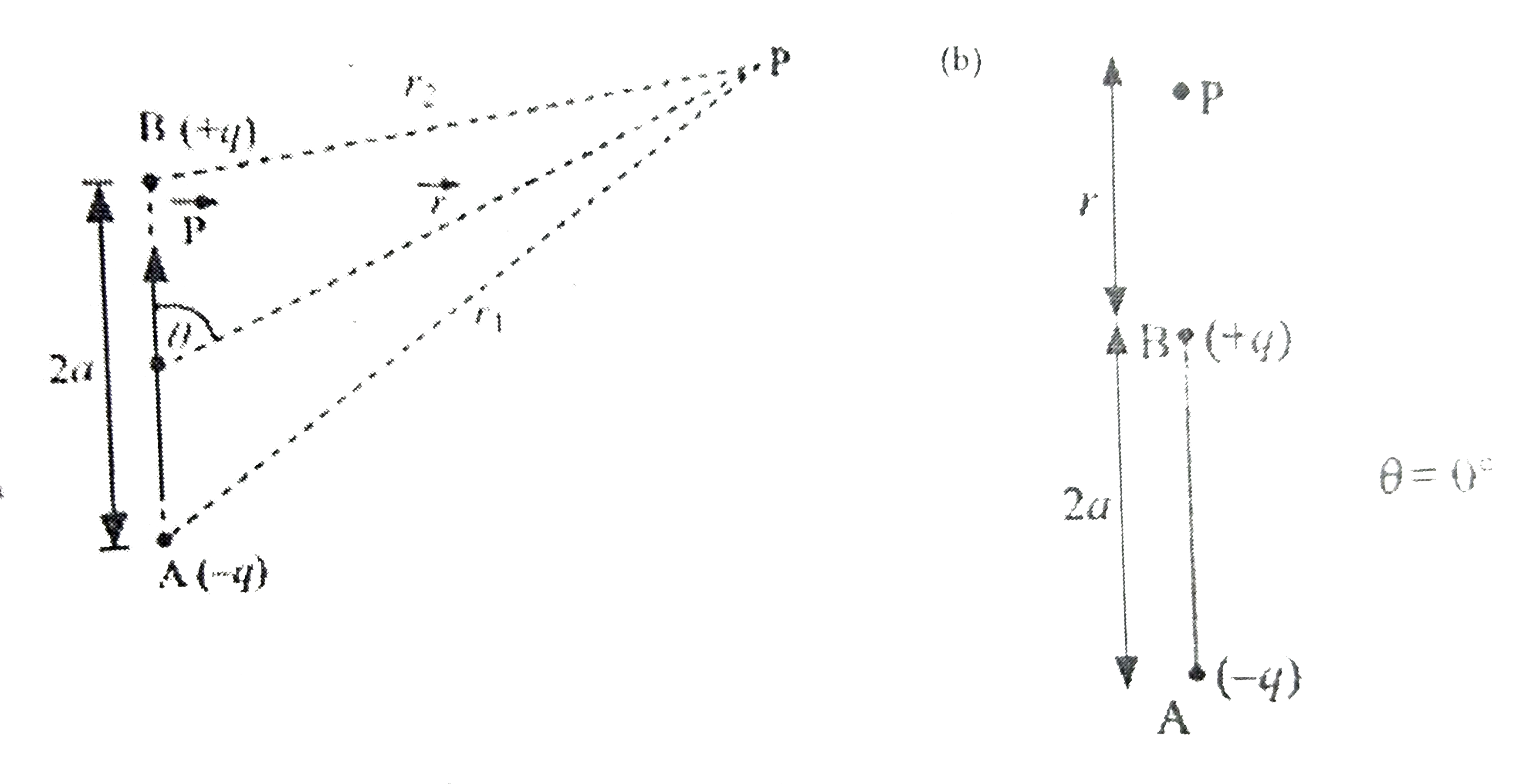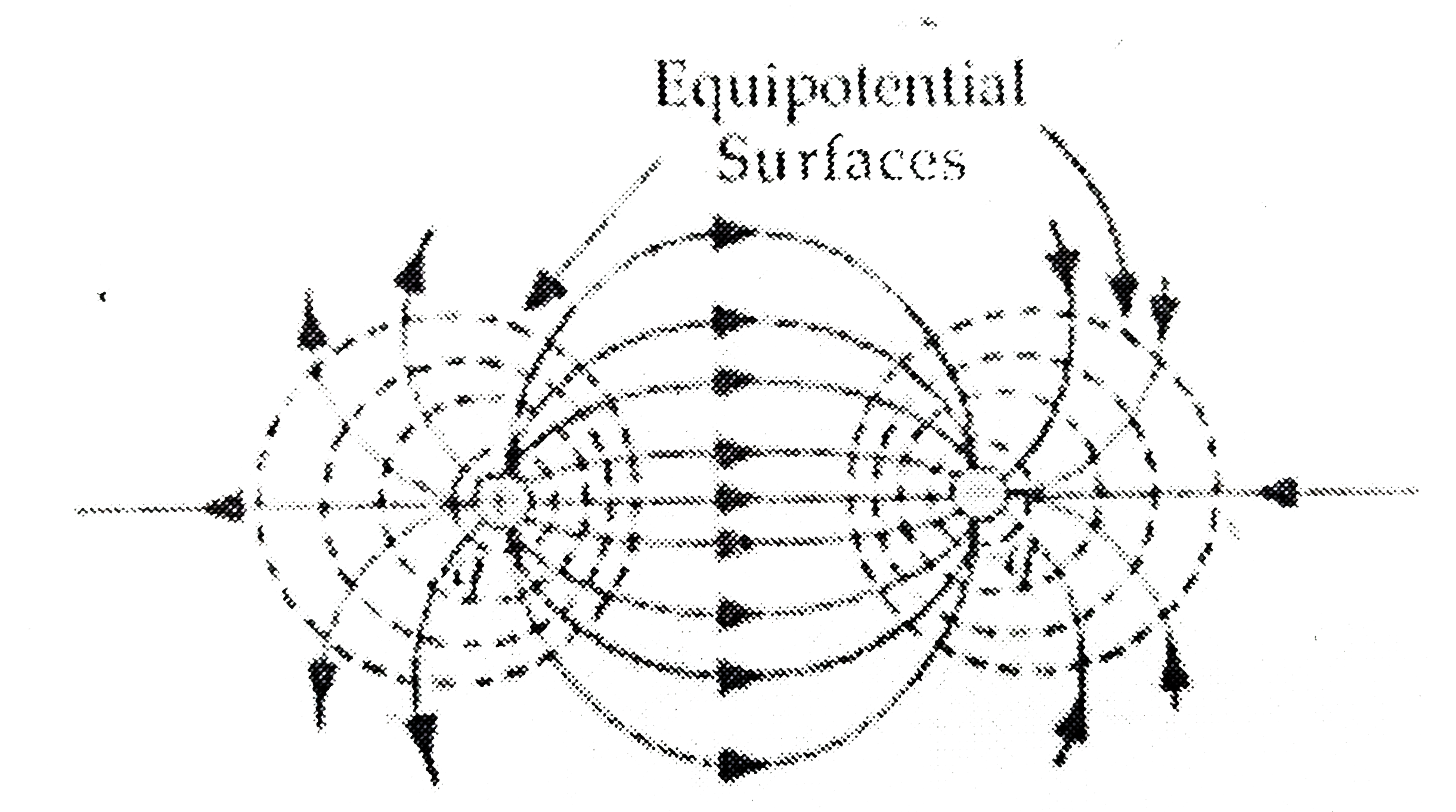(i) Derive the expression for the specific for the electric potential due to an electric dipole at a point on its axial line.
(ii) Depiet the equivpotential surfaces due to an electric dipole.
(i) Expression : Potential at P due to charge +q and -q.
V−q=−q4π∈0r1 and V+q=q4π∈0r2
Potential at P due to dipole V=V−q+V+q=q4π∈0[1r2−1r1]……..(i)

From the figure, r21=r2+d+2arcosθ
and, r22=r2+a2+2arcos(180∘−θ)=r2+a2−2arcosθ
⇒r21=r2[1+a2r2+2arcosθ]=r2[1+2arcosθ] as r>>a,a2r2=0
⇒r1=r[1+2arcosθ]12
So 1r1=1r[1+2arcosθ]−12
and 1r2==1r[1−2arcosθ]−1/2
Using it for (i)
V=q4π∈0r[1+arcosθ−(1−arcosθ)]
[Applying Binomial Theorem and neglecting highest power of 2ar ]
Hence, V=q4π∈0r[1+qrcosθ−1+arcosθ]
=q×2acosθ4π∈0r2
⇒V=pcosθ4π∈0r2,{p=q×2a= dipole moment}
Vaxial =pcosθ4π∈0r2 ( ∵θ=0∘ on axial line) =p4π∈0r2
(ii) Vnet=VA+VB=−kq(r2+a2)+−kq(r2+a2)=0

Topper's Solved these Questions
- BOOK - XII BOARD PREVIOUS YEAR PAPER ENGLISHCHAPTER - XII BOARDSEXERCISE - SET-III DELHI BOARD SEC-C5videos
XII BOARDS
- BOOK - XII BOARD PREVIOUS YEAR PAPER ENGLISHCHAPTER - XII BOARDSEXERCISE - [SET -II, OUTSIDE DELHI]6videos
XII BOARDS
- BOOK - XII BOARD PREVIOUS YEAR PAPER ENGLISHCHAPTER - XII BOARDSEXERCISE - SET-II DELHI BOARD (SEC-B)2videos
XII BOARDS
- BOOK - XII BOARD PREVIOUS YEAR PAPER ENGLISHCHAPTER - SAMPLE PAPER 2019EXERCISE - SECTION D6videos
SAMPLE PAPER 2019
Similar Questions
The electrostatic potnetial due to an electric dipole at an equatorial point is
View SolutionThe value of electric potential at any point due to any electric dipole is
View SolutionDerive the expression for the electric potential at any point along the axial line of an electric dipole.
View Solution(a) Define electric dipole moment. Is it a scalar or a vector ? Derive the expression for the electric field of a dipole at a point on the equatorial plane of the dipole.
(b) Draw the equipotential surfaces due to an electric dipole. Locate the points where the potential due to the dipole is zero.View SolutionDraw electric lines of forces due to an electic dipole.
View SolutionThe electric field of an electric dipole at a point on its axis , at a distance d from the centre of the dipole, varies as
View SolutionElectric Field due to Dipole
View SolutionDerive an expression for electric field intensity at a point due to point charge.
View SolutionIf Ea be the electric field strength of a short dipole at a point on its axial line and Ee that on the equatorial line at the same distance, then
View SolutionIf Ea be the electric field strength of a short dipole at a point on its axial line and Ee that on the equatorial line at the same distance, then
View Solution

